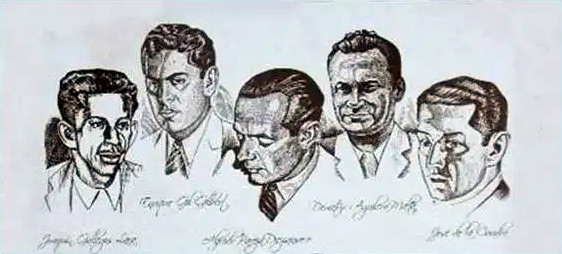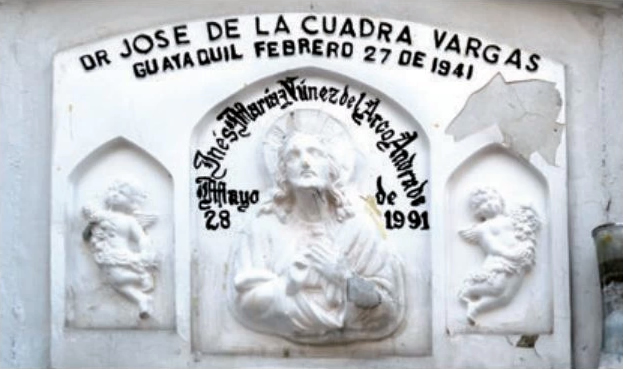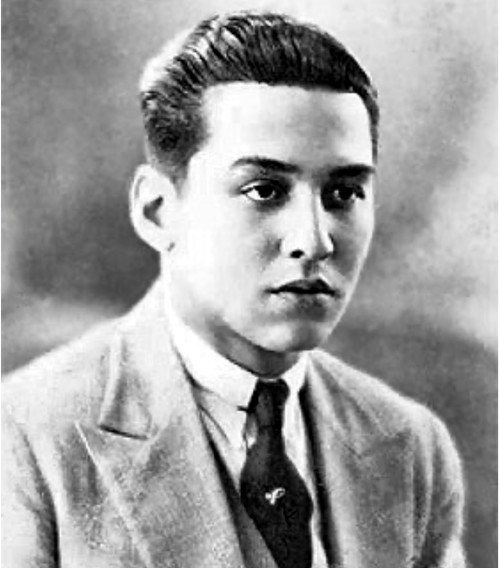José de la Cuadra Vargas (September 3, 1903 – February 27, 1941) is considered one of Ecuador’s greatest authors. De la Cuadra was a social realist novelist who wrote the short story La Tigra (1932) and the novel Los Sangurimas (1939). He was a part of the “Guayaquil Group,” a group of young social protest novelists from Guayaquil, Ecuador, in the 1930s, which included Enrique Gil Gilbert, Demetrio Aguilera Malta, Joaqun Gallegos Lara, and Alfredo Pareja Diezcanseco.
Introduction
José de la Cuadra Vargas, born on September 3, 1903, in Guayaquil, Ecuador, is widely regarded as one of the greatest authors in Ecuadorian literature. As a social realist novelist and a member of the renowned “Guayaquil Group,” Cuadra made significant contributions to Ecuador’s literary landscape in the 1930s.
Early Life and Education
José de la Cuadra was born to Vicente de la Cuadra y Vayas and Ana Victoria Vargas y Jiménez in Guayaquil. He obtained an LL.D. from the University of Guayaquil and later worked as a diplomat in Argentina and Uruguay. Cuadra’s education and experiences provided him with a solid foundation to observe and analyze the social and political landscape of Ecuador, which would deeply influence his literary works.
The Guayaquil Group and Social Protest
José de la Cuadra was an active member of the “Guayaquil Group,” a circle of young social protest novelists from Guayaquil in the 1930s. Alongside writers such as Enrique Gil Gilbert, Demetrio Aguilera Malta, Joaquín Gallegos Lara, and Alfredo Pareja Diezcanseco, Cuadra advocated for the rights of marginalized groups and condemned the exploiters of society. They took a stand in favor of the oppressed, including indigenous peoples, peasants, and workers, and vehemently criticized the elite, overseers, priests, and local authorities.
Literary Works and Film Adaptations
José de la Cuadra’s body of work encompasses essays, novels, articles, and, most notably, short stories. Some of his notable works include “La Tigra” (1932) and the novel “Los Sangurimas” (1939). These works shed light on the harsh realities of the Ecuadorian coastal region, exposing the exploitation of peasants and the displacement of indigenous populations. Cuadra’s literary achievements extend beyond the written word, as his stories have been adapted into films, such as “La Tigra” (1990) and “Los Sangurimas” (1998), bringing his narratives to a wider audience.
Contributions and Literary Significance
José de la Cuadra’s works are characterized by their technical expertise and political commitment. He played a pivotal role in the Generation of 1930, infusing Ecuadorian literature with a sense of social consciousness and the responsibility to denounce injustice. Cuadra’s writings explored the lives and customs of the montuvios, the coastal peasants of Ecuador, as showcased in his pioneering essay, “El montuvio ecuatoriano” (1937), which contributed to the understanding of Ecuador’s indigenous peoples and their cultural significance. Notably, his novel “Los Sangurimas” foreshadowed the magical realism genre, predating Gabriel García Márquez’s renowned work “One Hundred Years of Solitude” by over three decades.
Contempories

Along with prose writers Enrique Gil Gilbert, Demetrio Aguilera Malta, Joaquín Gallegos Lara and Alfredo Pareja Diezcanseco, José de la Cuadra was a member of the “Guayaquil Group,” a circle of young social protest novelists from Ecuador’s coastal city of Guayaquil in the 1930s.
The Guayaquil Group “took the side of the exploited—the Indians, montuvios, blacks, mulattoes, Cholos, peasants, and workers—and attacked the exploiters—the elite, the overseers, the priests, and the local police.”
(from Encyclopedia.com)
Other contemporaries include the poets Medardo Ángel Silva and José María Egas, with whom he contributed to many of the same magazines of the time.
Death
On February 27, 1941, at the age of 37, José de la Cuadra died of a massive brain hemorrhage.

Works made into films:
La Tigra – Trailer (1990)
José de la Cuadra’s short story La Tigra was made into a film of the same name in 1990. It was directed by Camilo Luzuriaga.
Los Sangurimas – Full movie (1998)
José de la Cuadra’s novel Los Sangurimas was made into a film of the same name in 1998. It was directed by Carl West.
List of works
- Olga Catalina (Id. Id., 1925)
- El sabor de la locura (Id. Id., 1925)
- Perlita Lila (Id. Id., 1925)
- Oro de sol (Guayaquil: El Telégrafo, 1925)
- Horno (Guayaquil: Talleres de la Sociedad Filantrópica, 1932), read it for free here.
- Sueño de una noche de Navidad (Guayaquil: Artes Gráficas Senefelder, 1930)
- Repisas (Guayaquil: Artes Gráficas Senefelder, 1931), read it for free here.
- El amor que dormía (1930), read it for free here.
- Madrecita falsa (1923)
- La vuelta de la locura (Madrid: Revista Literaria Novelas y Cuentos, 1932)
- Guásinton: relatos y crónicas (Quito: Talleres Gráficos de Educación, 1938)
- Los Sangurimas (Madrid: Cenit, 1934)
- 12 siluetas (Quito: Ed. América, 1934)
- El montuvio ecuatoriano (Buenos Aires: Imán, 1937)
- Obras Completas de José de la Cuadra (Quito: Casa de la Cultura, 1958)
- Los monos enloquecidos (Quito: Casa de la Cultura Ecuatoriana, 1951)

